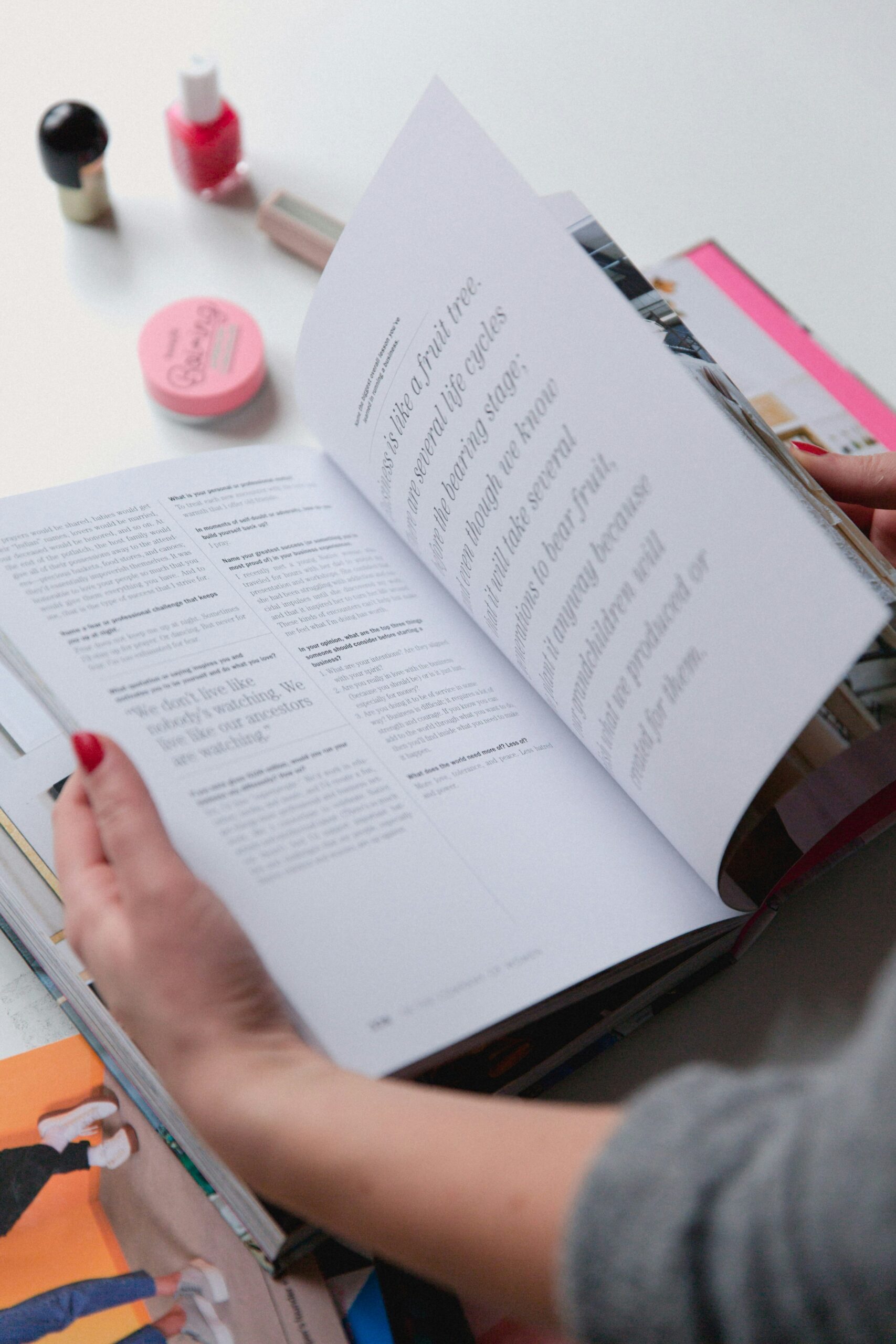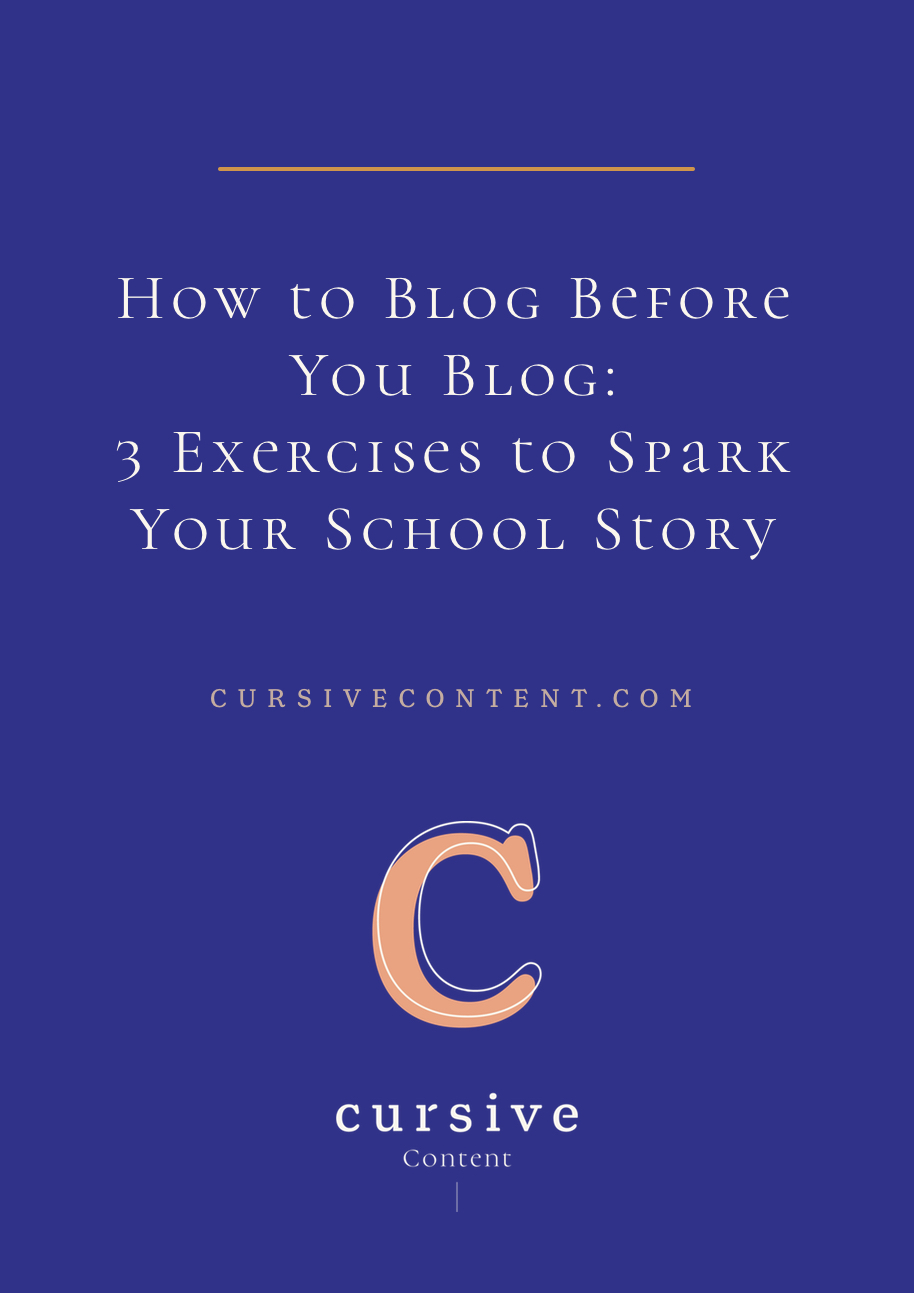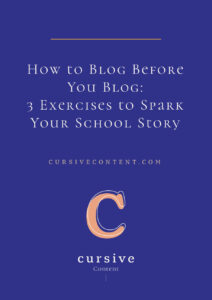How to Blog Before You Blog: 3 Exercises to Spark Your School Story

Today, you don’t have a blog. But you have an idea — a big, super, fat, fantastic idea that won’t let your mind rest.
So how do you bring this story to life? How do you begin to give it the attention it needs when you are starting from scratch?
Big, fat ideas can lead to big, fat anxiety. The overwhelming process of creating something completely new on your own can be enough to keep that idea buried safely in your mind.
But creating a blog — telling your school’s story — doesn’t have to be so all-consuming. There are ways you can start, test and refine your big idea before you go all in with a content marketing strategy.
However, all of these ways require the same thing: YOU MUST WRITE.
Here’s how you can blog before you blog, and focus your creative energy before you get deep in the nitty-gritty of building a content platform:
#1: Write somewhere else.
You read that correctly: when you’re just starting out, it’s OK for you to build on borrowed land. Writing on an established platform is a great way to get an immediate reaction to your story from an established audience. The key is that you want to view this as a testing phase, a way to refine your story in order to create something that you own in the future.
So where can you begin writing right now? Two publishing platforms worth trying: Medium and LinkedIn.
Medium is a quickly growing platform from two of the founders of Twitter. It bills itself as “a different kind of place to read and write on the internet. A place where the measure of success isn’t views, but viewpoints. Where the quality of the idea matters, not the author’s qualifications. A place where conversation pushes ideas forward and words still matter.”
Content creators and internet folk love Medium because it’s a beautiful site that makes reading and writing interactive and pleasurable. As someone just starting out, Medium provides you with an aesthetically pleasing platform on which you can begin publishing immediately. You can even begin to grow a following on Medium, so that when you do create your own blog or website, you can prompt your growing audience to check it out.
LinkedIn is similar, but it may be even easier to reach an audience because so many people you know are already using it.
When you publish on LinkedIn, your content is open for all LinkedIn users to read. That means if it gains even a smidgen of popularity, it has the opportunity to spread quickly through the platform. Users who are not your direct connections can then choose to follow you and be notified of your content updates in the future.
Your connections are also notified when you publish a piece of content, again increasing the likelihood that your content will be read. And all of your published posts become part of your profile, creating a stronger portrait of your authority.
#2: Write for someone else.
Blogging can be a very communal, supportive experience if you connect with the right people. And guest posting is a great way to do that.
Guest posting will allow you to test your topic angle with an audience that you know is interested in your topic.

#3: Write microblogs all day, every day.
Say wha? Ok, think about how much you already write every day on social media. From tweets to pins to Snapchats, the content opportunities are endless.
Begin thinking about every piece of social content you share as a microblog — and I mean every update, every share. Shift these pieces of small content to reflect your intended story angle. If people are liking, clicking and sharing certain topics or updates, that will help you inform your future topics — and grow a focused social media following in the meantime.
These three exercises don’t come for free. They all require creative work on your end. But think of each as a way to invest your ideas and creative brainpower for the future. By actively testing and sharpening your story, you’ll create a better blog product and feel more confident when you finally do build that fantastic content platform.
Need more help creating and sharing a story your audience will love? Sign up to access our FREE Resource Library, or contact us to start a one-on-one conversation.
MORE ARTICLES
-
 Clarity in 50 Words or Less: How to Write Your School’s One-Sentence Story
Clarity in 50 Words or Less: How to Write Your School’s One-Sentence Story -
 The 4 Building Blocks of a Strong School Story (and Why AI Needs Them)
The 4 Building Blocks of a Strong School Story (and Why AI Needs Them) -
 How to Stop ChatGPT from Making Your School Sound Generic
How to Stop ChatGPT from Making Your School Sound Generic -
 What Should Your School Do with Its Blog Now That AI Is Changing Search?
What Should Your School Do with Its Blog Now That AI Is Changing Search? -
 What Is Your Private School’s Bold & Unifying Big Promise?
What Is Your Private School’s Bold & Unifying Big Promise? -
 Viewbook Best Practices for Private Schools
Viewbook Best Practices for Private Schools -
 AI Writing Prompts to Power Private School Storytelling
AI Writing Prompts to Power Private School Storytelling -
 When to Outsource Your Private School Content Marketing to an Expert
When to Outsource Your Private School Content Marketing to an Expert

